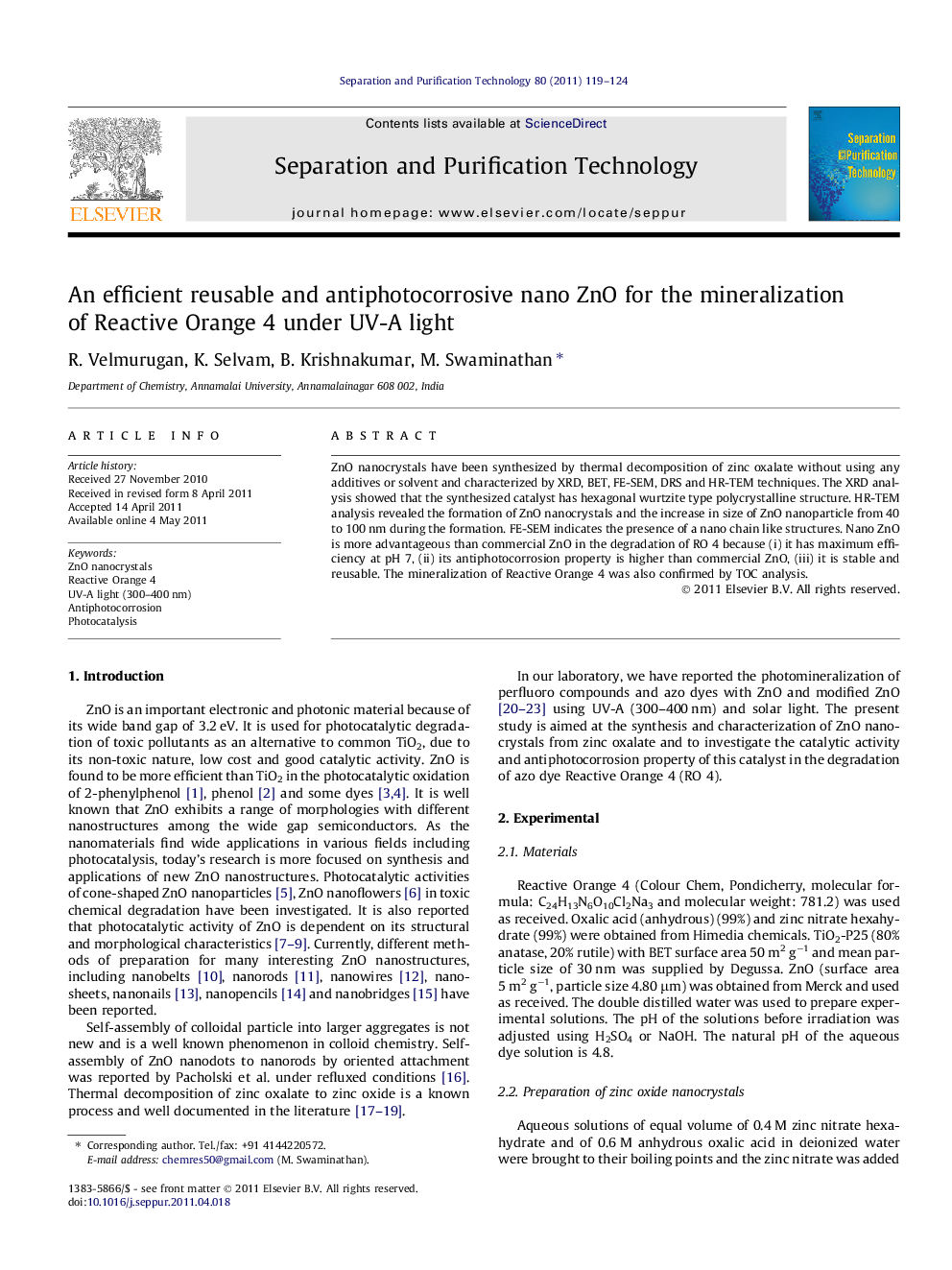| Article ID | Journal | Published Year | Pages | File Type |
|---|---|---|---|---|
| 642581 | Separation and Purification Technology | 2011 | 6 Pages |
ZnO nanocrystals have been synthesized by thermal decomposition of zinc oxalate without using any additives or solvent and characterized by XRD, BET, FE-SEM, DRS and HR-TEM techniques. The XRD analysis showed that the synthesized catalyst has hexagonal wurtzite type polycrystalline structure. HR-TEM analysis revealed the formation of ZnO nanocrystals and the increase in size of ZnO nanoparticle from 40 to 100 nm during the formation. FE-SEM indicates the presence of a nano chain like structures. Nano ZnO is more advantageous than commercial ZnO in the degradation of RO 4 because (i) it has maximum efficiency at pH 7, (ii) its antiphotocorrosion property is higher than commercial ZnO, (iii) it is stable and reusable. The mineralization of Reactive Orange 4 was also confirmed by TOC analysis.
Graphical abstractFE-SEM images of nanostructured ZnO exhibits a chain like structure. Size of these particles ranges from 40 to 100 nm.Figure optionsDownload full-size imageDownload as PowerPoint slideHighlights► ZnO nanocrystals have been synthesized by thermal decomposition of zinc oxalate without using any additives or solvent. ► FE-SEM indicates the presence of a nano-chain like structure for ZnO. ► Nano-ZnO is more efficient than commercial ZnO in the degradation of RO 4. ► Its antiphotocorrosion and recyclable properties are higher than commercial ZnO.
